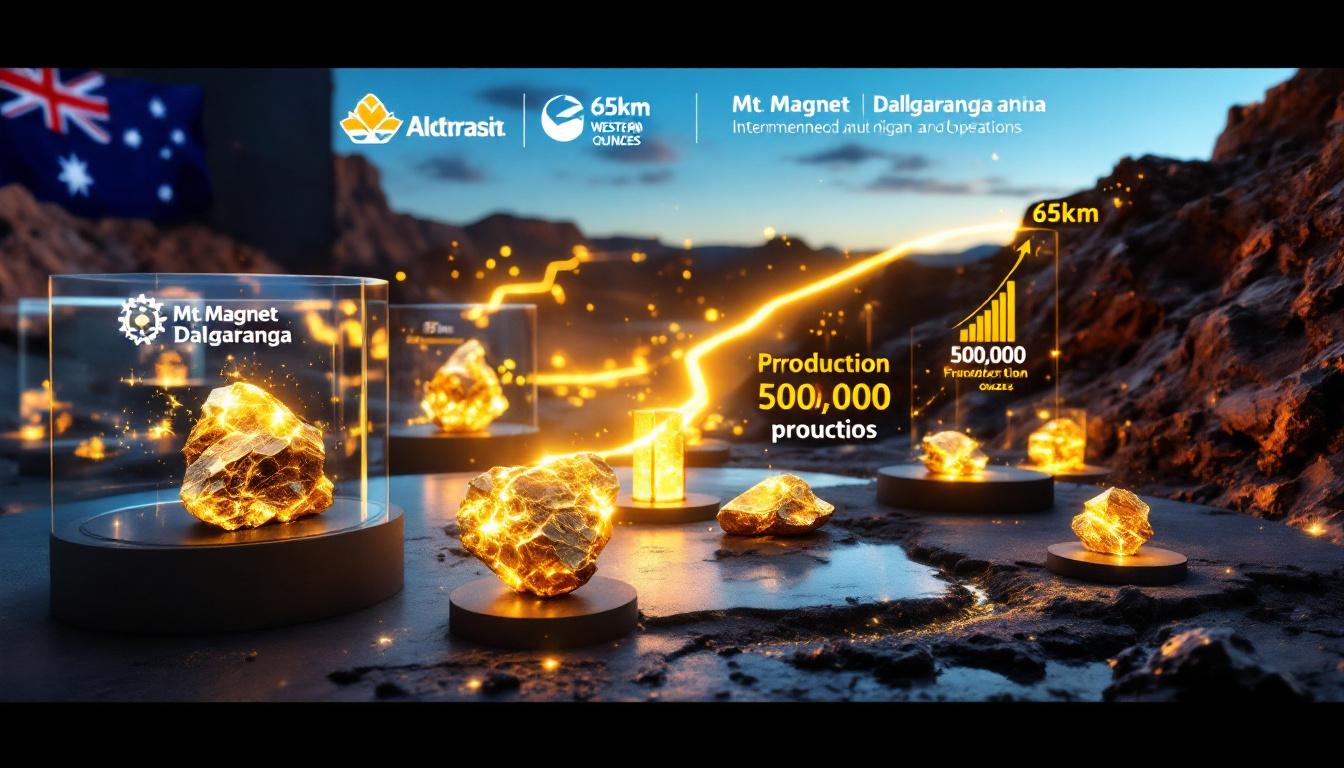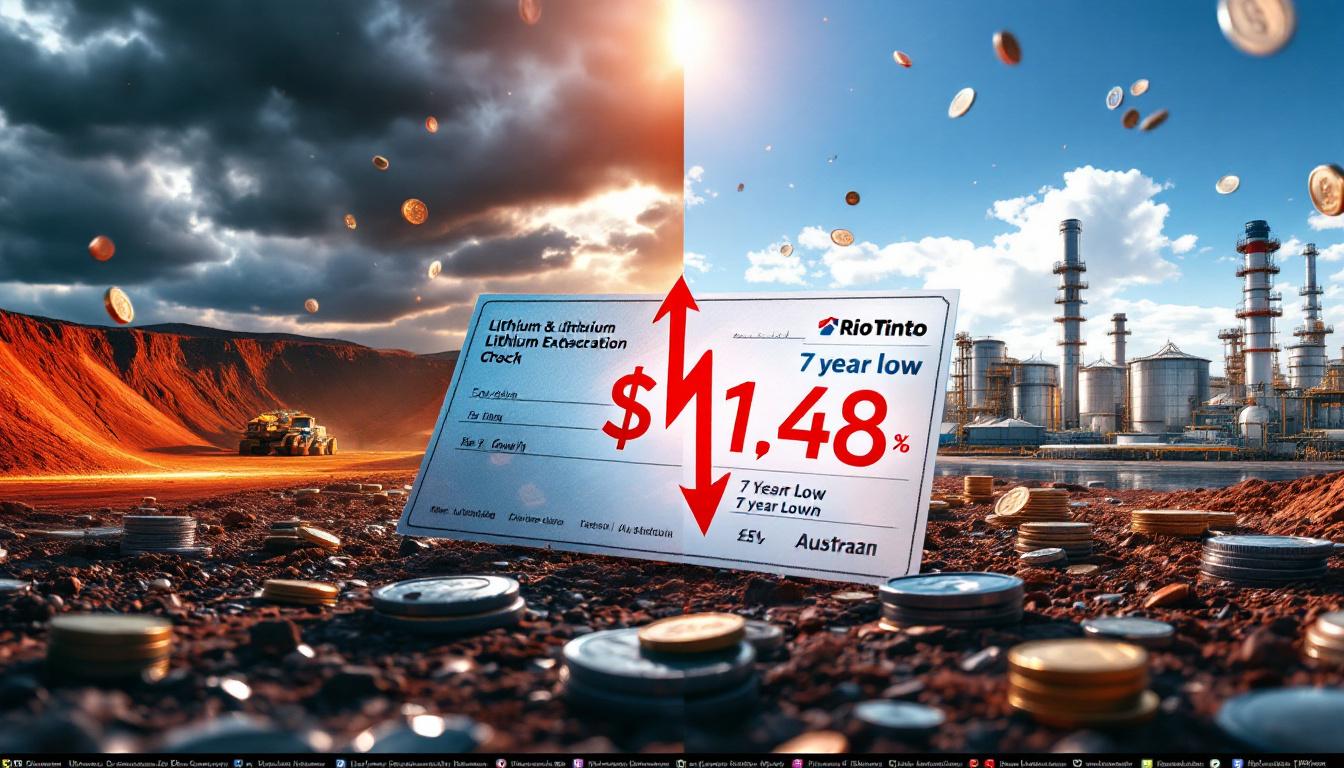The Shifting Landscape of Global Magnesium Exports in May 2025
Magnesium markets witnessed dramatic transformations in May 2025, with the export landscape undergoing significant restructuring that signals evolving industrial demands and changing market dynamics. While overall export volumes increased month-on-month, the composition of these exports revealed telling shifts in global consumption patterns that merit deeper analysis.
The most notable development was the surge in magnesium alloys, which claimed an unprecedented 58% share of total magnesium exports, while traditional magnesium ingot shipments plummeted to their lowest levels in nearly a year. This fundamental restructuring reflects broader changes in industrial applications, procurement strategies, and value chain optimization across key global markets.
What Happened to Global Magnesium Exports in May 2025?
China's magnesium export data for May 2025 revealed a complex picture beneath the headline growth figures. While total export volumes increased compared to April, the product composition underwent remarkable changes that signal deeper market transformations.
Magnesium alloys emerged as the dominant export category, capturing 58% of total exports according to China Customs data. This represents a historical high for alloy exports, which traditionally played a secondary role to primary magnesium ingots in the export mix.
Meanwhile, raw magnesium ingot exports experienced a concerning decline, dropping 14.43% year-on-year to reach their lowest level since June 2024. This dramatic fall occurred despite generally robust demand in several consuming regions, suggesting structural rather than cyclical factors at play.
Magnesium powder exports also showed significant growth, though not matching the dramatic rise seen in alloy products. The combination of these trends points to a value-added shift in China's magnesium export strategy, moving from raw materials toward more processed and specialized products.
"The May export figures represent a potential inflection point in global magnesium trade dynamics," notes the SMM Market Analysis Team. "The shift toward alloys signals both producer strategy adjustments and changing consumption preferences in key markets."
Key Export Statistics for May 2025
- Total magnesium product exports increased month-on-month across all categories
- Magnesium alloys claimed 58% of total export volume, setting a new record
- Magnesium ingot exports fell to a 12-month low, declining 14.43% year-on-year
- Value-added products (alloys and powders) showed the strongest growth momentum
- Asian markets maintained their position as the primary circulation hub for magnesium products
Why Did Magnesium Ingot Exports Collapse?
The precipitous decline in magnesium ingot exports can be attributed to several interconnected factors that disrupted traditional trading patterns and purchasing behaviors across global markets.
Price Volatility Triggering Buyer Hesitation
Magnesium ingot prices reached their annual high point in May 2025, creating significant hesitation among downstream consumers. This price spike triggered a widespread "wait-and-see" purchasing strategy across multiple sectors, with buyers postponing orders in anticipation of potential price corrections.
The psychological impact of record prices cannot be underestimated. After experiencing several years of relative price stability, the sudden volatility created procurement uncertainty that many buyers resolved by temporarily reducing or suspending purchases altogether.
"When prices reach historical highs, downstream buyers inevitably question whether the trajectory is sustainable," explains the SMM Price Analysis Division. "This hesitation created a feedback loop where reduced demand further complicated price discovery mechanisms."
The resulting order postponements led to a significant contraction in raw magnesium export volumes, despite relatively stable underlying demand fundamentals in most consuming industries. This scenario demonstrates how price perception and volatility can temporarily override actual consumption needs.
Changing Procurement Methodologies
Beyond simple price reactions, May 2025 also witnessed an acceleration of fundamental changes in how magnesium is purchased globally. Traditional one-to-one ordering models, which dominated the industry for decades, continue to lose ground to more sophisticated procurement methodologies.
Electronic tendering platforms have gained significant traction, with major consumers increasingly soliciting multiple quotes through digital marketplaces rather than relying on established supplier relationships. This trend enhances price discovery while creating more competitive market conditions.
Large enterprises have also deployed advanced analytics for comprehensive cost analysis and supply-demand forecasting. These models enhance pricing negotiation capabilities while optimizing inventory management, allowing buyers to time purchases more strategically during periods of price volatility.
The net effect has been a fundamental shift in power dynamics between suppliers and consumers, with traditional trading relationships giving way to more commodity trading strategies that are data-driven and flexible.
How Are Regional Magnesium Market Dynamics Shifting?
The geographical distribution of magnesium exports underwent notable changes in May 2025, with traditional markets weakening while emerging regions gained increasing prominence in the global trade landscape.
Europe's Declining Market Position
European markets, once the cornerstone of global magnesium consumption, saw their import share of magnesium ingots fall to just 28% in May 2025. This represents a significant decline from historical norms and reflects both cyclical and structural challenges facing European manufacturing sectors.
Two primary factors appear to be driving this decline:
-
Automotive manufacturing contraction – European automotive production has experienced ongoing challenges, with a measured 5.2% year-on-year decline in output during the first half of 2025. As a major consumer of magnesium for lightweighting applications, this contraction has directly impacted magnesium demand.
-
Price volatility complications – The extreme price environment made procurement planning exceptionally difficult for European buyers, many of whom operate under strict budgetary frameworks that struggle to accommodate rapid price fluctuations.
The combined effect has been a gradual but persistent reduction in orders from European manufacturers, with many seeking alternative materials or delaying non-essential purchases until market conditions stabilize.
Emerging Market Growth
While Europe's position weakened, several emerging markets demonstrated remarkable resilience and growth in magnesium consumption:
-
Asian market resilience – The broader Asian region maintained its position as the primary circulation hub for magnesium products, with consistent demand across multiple sectors.
-
South Korean import growth – South Korea showed particular strength, increasing its market share and maintaining stable demand despite global uncertainties. The country's robust electronics manufacturing sector, which utilizes magnesium in various components, continues to drive consistent consumption.
-
Indian market expansion – India has emerged as an increasingly important destination for magnesium exports, with rapid industrialization and growing automotive manufacturing creating new demand centers.
-
North American stability – Despite global fluctuations, North American markets maintained relatively consistent demand levels, providing a stabilizing influence on overall export patterns.
This geographical redistribution of magnesium consumption highlights the shifting center of industrial activity from traditional Western manufacturing hubs toward emerging economies with growing industrial bases, following broader iron ore trends and other resource markets.
What's Driving the Rise in Magnesium Alloy Exports?
While raw magnesium ingot exports declined sharply, magnesium alloys have emerged as the dominant export category, reflecting fundamental changes in market preferences and industrial applications.
Value-Added Product Preference
The shift toward alloys represents a strategic move up the value chain for both producers and consumers. Several factors make alloys increasingly attractive compared to raw ingots:
-
Higher profit margins – Alloys typically command premium pricing over raw ingots, with margins up to 22% higher according to SMM pricing data. This creates strong incentives for producers to focus on alloy production.
-
Price volatility insulation – Processed products demonstrate less susceptibility to raw material price swings, providing more stable cost structures for end users.
-
Specialized applications – Growing demand for custom alloy formulations tailored to specific high-tech industries has created new market niches that command premium pricing.
-
Manufacturing efficiencies – Downstream manufacturers increasingly prefer ready-to-use alloy inputs that reduce processing steps and associated costs in their production lines.
"The value proposition of alloys has fundamentally changed over the past 18 months," notes the SMM Industrial Applications Report. "What once represented a premium option has increasingly become the standard as manufacturers optimize their production processes."
Industry Application Expansion
Beyond simple value chain considerations, magnesium alloys have found expanding applications across multiple industries:
-
Automotive sector evolution – Vehicle manufacturers have significantly increased magnesium alloy usage in structural components, interior parts, and powertrain applications. The drive toward vehicle lightweighting for both fuel efficiency and electric vehicle range extension continues to create new opportunities.
-
Aerospace demand growth – The aerospace industry has expanded magnesium alloy applications in non-critical components, where the exceptional strength-to-weight ratio provides performance advantages.
-
Electronic device integration – Consumer electronics manufacturers increasingly utilize magnesium alloys for casings and structural components, valuing their combination of lightweight properties, heat dissipation, and premium feel.
-
Industrial equipment applications – Specialized industrial machinery has adopted magnesium alloys for components requiring high strength with minimal weight, particularly in robotics and automation equipment.
This application diversification has created a more resilient demand profile for magnesium alloys, with weakness in any single sector offset by strength in others. Furthermore, the ongoing mining industry evolution has supported these new applications with improved extraction and processing techniques.
What Are the Future Prospects for Magnesium Exports?
Market analysis suggests several emerging trends that will shape the magnesium export landscape in the coming months, with some potential stabilization on the horizon.
June 2025 Forecast
According to SMM market intelligence, June 2025 is expected to bring several significant developments:
-
Expected export increase – Overall magnesium product exports are projected to rise as delayed orders resume and seasonal factors come into play.
-
Order volume recovery – The normalization of prices is anticipated to trigger a release of pent-up demand, particularly from buyers who postponed purchases during May's price peaks.
-
European market re-entry – Early indicators suggest a potential recovery in Netherlands imports as European traders return to the market, potentially reestablishing traditional trade flows.
-
Product mix stabilization – While alloys will likely maintain their dominant position, some rebalancing between alloys and ingots may occur as price differentials normalize.
These projections suggest a potential stabilization period following May's dramatic shifts, though the structural changes in product mix are likely to persist as part of a longer-term trend.
Strategic Market Recommendations
For participants in the magnesium trade ecosystem, several strategic considerations emerge from current market dynamics:
-
Emerging market focus – Prioritizing South Korea, India, and Middle Eastern markets offers growth opportunities as traditional European demand faces continued headwinds.
-
Beyond price competition – Emphasizing product quality, consistency, and brand reputation becomes increasingly important in a market where price is no longer the sole determining factor.
-
Supply chain reliability – Highlighting consistency and dependability in uncertain markets creates competitive advantages, particularly for suppliers with integrated production capabilities.
-
Value-added services – Developing complementary offerings such as technical support, customization options, and flexible delivery terms enhances customer relationships and creates differentiation.
"The magnesium market is evolving from a commodity-focused trade to a more sophisticated ecosystem where service, reliability and technical capabilities increasingly determine success," emphasizes the SMM Strategic Advisory team.
Comparative Market Position: Magnesium vs. Other Lightweight Metals
The shifting dynamics in magnesium exports must be understood within the broader context of lightweight metals competition. Each material occupies a distinct position in the market:
| Metal | Primary Applications | Price Trend (2025) | Supply Stability | Environmental Impact |
|---|---|---|---|---|
| Magnesium | Automotive, aerospace, electronics | Volatile, reaching annual highs | Moderate concerns | Medium-high (energy-intensive production) |
| Aluminum | Construction, packaging, transportation | Steady growth | Stable | Medium (improving with recycling) |
| Titanium | Aerospace, medical, industrial | Premium pricing, stable | Stable | High (complex extraction) |
| Carbon Fiber | Aerospace, sports equipment, luxury goods | High but decreasing | Increasing capacity | Medium-high (production process) |
While magnesium faces current price volatility challenges, its fundamental position as the lightest structural metal ensures continued demand, particularly as transportation electrification accelerates the need for lightweight materials across multiple industries.
The environmental impact of magnesium production remains a concern, with its energy-intensive production process creating potential regulatory and cost pressures. However, ongoing innovations in production technology and increasing recycling rates offer pathways to improved sustainability metrics over time. These commodity price impacts continue to shape industry strategies and investment decisions.
Understanding the Magnesium Market: Key Questions Answered
What factors influence magnesium pricing?
Magnesium pricing is influenced by several interconnected factors:
- Production costs – Energy prices, particularly coal and electricity in China, represent the primary input cost driver.
- Supply-demand balance – The relatively concentrated production base means that changes in output from major producers can significantly impact global pricing.
- Environmental regulations – Production constraints from emissions regulations and energy consumption limitations periodically affect output and pricing.
- Downstream industry demand – Consumption patterns in automotive, aerospace, and electronics industries create demand-side pricing pressures.
The combination of these factors creates the price volatility seen in May 2025, when multiple variables aligned to create record high prices.
How does magnesium trade relate to global automotive production?
As a lightweight structural metal, magnesium demand closely tracks automotive manufacturing trends, with several specific linkages:
- Vehicle lightweighting initiatives – Fuel efficiency standards drive increased usage of lightweight materials, with magnesium offering significant weight savings.
- Electric vehicle production – Range extension requirements in EVs create stronger incentives for weight reduction, benefiting magnesium consumption.
- Emissions regulations – Increasingly stringent global emissions standards indirectly boost magnesium demand through lightweighting requirements.
- Component specialization – Steering wheels, seat frames, and instrument panel structures represent established applications for magnesium alloys.
The recent contraction in European automotive production directly contributed to reduced magnesium ingot imports, demonstrating this close relationship.
Why are magnesium alloys gaining market share over pure ingots?
Magnesium alloys offer several advantages that explain their growing market share:
- Superior mechanical properties – Alloys provide enhanced strength, ductility, and fatigue resistance compared to pure magnesium.
- Corrosion resistance – Properly formulated alloys address one of pure magnesium's key limitations through significantly improved corrosion performance.
- Application-specific characteristics – Custom alloy formulations can be tailored to specific end-use requirements, optimizing performance for particular applications.
- Process integration – Alloys require less downstream processing, simplifying manufacturing processes for end users.
These technical advantages, combined with the economic benefits discussed earlier, create compelling incentives for the ongoing shift toward alloy consumption.
How might changing procurement methods affect magnesium suppliers?
The evolution of procurement methodologies creates both challenges and opportunities for magnesium suppliers:
- Price transparency pressure – Electronic tendering platforms increase price visibility across the market, potentially compressing margins for undifferentiated suppliers.
- Quality premium opportunities – Sophisticated analytics-driven purchasing can identify and reward consistent quality and delivery performance.
- Relationship transformation – Traditional relationship-based transactions are giving way to more data-driven procurement decisions.
- Service differentiation importance – Technical support, customization capabilities, and responsive customer service become increasingly important differentiators.
Suppliers who adapt to these changing procurement methods by developing enhanced service offerings and consistent quality metrics will likely outperform those relying solely on traditional trading relationships. Additionally, those who incorporate global investment insights into their strategic planning will be better positioned to navigate market uncertainties.
Key Insight: While magnesium faces price volatility challenges, its fundamental position as the lightest structural metal ensures ongoing demand, particularly as transportation electrification accelerates the need for lightweight materials.
Want to Capitalise on ASX Mineral Discoveries?
Discovery Alert provides instant notifications when significant discoveries are announced on the ASX, powered by its proprietary Discovery IQ model. Explore how historic discoveries have generated substantial returns by visiting the Discovery Alert discoveries page and gain your market-leading advantage today.




